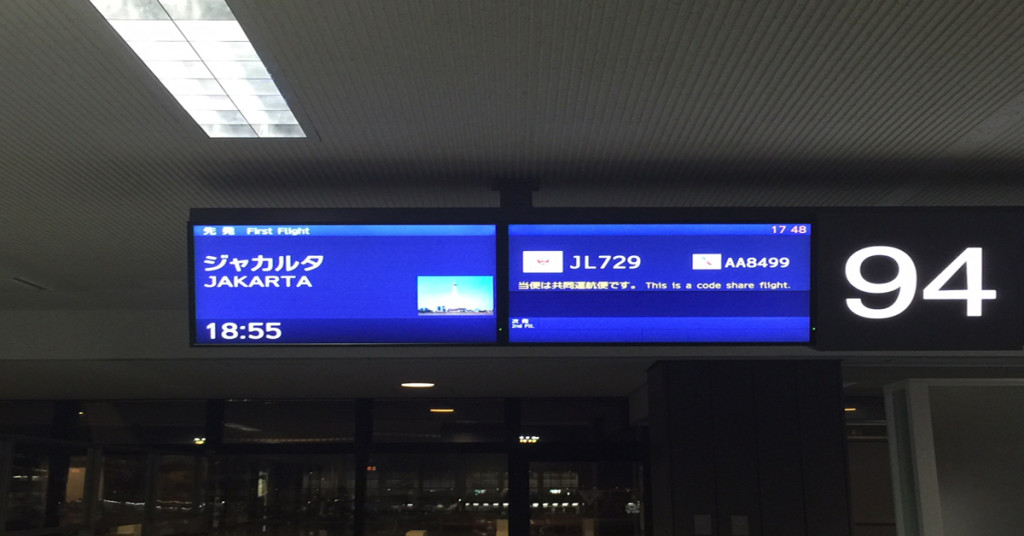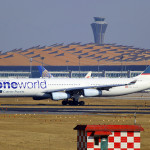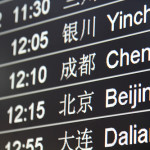Airline alliances have been around for quite some time, but many people point to the Open Skies agreement between the United States and the Netherlands in 1992 as the beginning of the modern alliance system. Airline alliances occur when 2 or more airlines agree to cooperate on such things as network and operations, marketing, and frequent flyer benefits, which I’ll cover in more detail later.
This post serves as an introduction to the major airline alliances and what purpose they serve. I will dive into each of the 3 major alliances: Oneworld, Star Alliance, and Skyteam, in 3 separate articles.
To get us started, though, here is a list of the 3 major alliances and their members:
| Oneworld (15 members) | Star Alliance (27 members) | Skyteam (20 members) |
|---|---|---|
| Airberlin (Europe) American Airlines (North America) British Airways (Europe) Cathay Pacific (Asia) Finnair (Europe) Iberia (Europe) Japan Airlines (Asia) LAN (South America) Malaysia Airlines (Asia) Qantas (Oceania) Qatar Airways (Middle East) Royal Jordanian (Middle East) S7 Airlines (Russia) Sri Lankan Airways (Asia) TAM (South America) | Adria (Europe) Aegean (Europe) Air Canada (North America) Air China (Asia) Air India (Asia) Air New Zealand (Oceania) ANA (Asia) Asiana Airlines (Asia) Austrian (Europe) Avianca (South America) Brussels Airlines (Europe) Copa Airlines (Central America) Croatia Airlines (Europe) EgyptAir (Africa) Ethiopian (Africa) EVA Air (Asia) LOT Polish Airlines (Europe) Lufthansa (Europe) Scandinavian Airlines (Europe) Shenzhen Airlines (Asia) Singapore Airlines (Asia) South African Airways (Africa) SWISS (Europe) TAP Portugal (Europe) THAI (Asia) Turkish Airlines (Asia) United (North America) | Aeroflot (Russia) Aerolineas Argentinas (South America) AeroMexico (Central America) Air Europa (Europe) Air France (Europe) Alitalia (Europe) China Airlines (Asia) China Eastern (Asia) China Southern (Asia) Czech Airlines (Europe) Delta (North America) Garuda Indonesia (Asia) Kenya Airways (Africa) KLM (Europe) Korean Air (Asia) MEA (Middle East) Saudia (Middle East) TAROM (Europe) Vietnam Airlines (Asia) Xiamen Air (Asia) |
Notice that the 3 airline alliances listed above have a global reach. They are all major airlines. Many of them are the flagship airlines for their respective countries.
But what about smaller airlines?
More recently, a couple of regional alliances have sprung up in an effort to create a regional alternative to the major alliances. There are 2 noteworthy examples:
- U-Fly Alliance (an alliance of North Asian low-cost carriers). Members include: HK Express (Hong Kong), Lucky Air (Kunming), Urumqi Air (Urumqi), West Air (Chongqing).
- Vanilla Alliance (an alliance of small Indian Ocean carriers). Members include: Air Austral (Reunion), Air Madagascar, Air Mauritius, Air Seychelles, and Int’Air Iles (Comoros).
Benefit of Airline Alliances
There are a number of reasons why airlines decide to form partnerships with other airlines. Let’s look at a few of the main reasons.
Extended Route Network – I’m sure that any one airline would love to have a route network that connected the entire world. However, due to various government restrictions and the sheer economics behind it, it’s just not feasible to do so. And that’s a good thing. Otherwise, competition would be much more limited and prices would go up.
As an alternative, airlines from different continents have come together to extend individual airline route networks and increase the frequency of flights to a partner region.
This is beneficial to airlines because they can market their airline to a particular destination even if that airline doesn’t fly there. This all probably sounds confusing, so let’s look at an example.
I took a flight from Washington, DC, to Jakarta, Indonesia, and had connections in Dallas and Tokyo along the way. All of the flights were marketed as American Airlines flight numbers, even though the segment from Tokyo to Jakarta was operated by Japan Airlines. So even though American Airlines itself doesn’t fly to Jakarta, their alliance agreement with Japan Airlines allows American Airlines to sell flights to Jakarta. This is called a codeshare.
Next time you have an international flight, check the departure board to see if your flight has more than 1 flight number. If it does, then it’s a codeshare flight. For example, my Tokyo to Jakarta flight numbers were AA8499 for American Airlines and JL729 for Japan Airlines. It was the same flight, just marketed by 2 different airlines.
Frequent Flyer Benefits – As a consumer, especially if you have a frequent flyer account, it’s beneficial to know who is marketing and operating your flights so you have an idea of how many miles will be credited to your account. I’ll talk more about this during each of the alliance articles.
If you are an elite member of any one of the airlines within an alliance, your status within that airline will equate to a similar status within the alliance itself. For example, United Airlines platinum status equates to Star Alliance gold status.
The reason alliances have separate programs is so that there is a common understanding among all the airlines within that alliance on how to handle elite members. If you are flying with an alliance airline other than your primary one, you’ll maintain certain benefits like priority check-in, priority boarding, and partner lounge access.
Using the United Airlines example, if you had a flight on Brussels Airlines (also a Star Alliance member), you’d be able to use the Star Alliance gold status that you earned with United to get priority check-in, boarding, and a host of other benefits on Brussels Airlines.
Round the World Tickets – If you’re the kind of person that would love to visit multiple regions of the world on one trip, or just drop it all and travel for a year, a “round the world” ticket is a potentially great option. Though it is becoming more obsolete, all 3 of the major alliances still offer a round the world ticket option.
The rules are different for each alliance, but in general a round the world ticket is good for as little as 7 days and as long as 1 year. Other common rules include consistent direction of travel (can’t cross the same ocean twice, for example), a cap on the total number of flights you can take, including layovers (usually around 15-16), and you must return to the country from which you first departed.
For each alliance, the round the world ticket is valid on any one of the alliance member airlines. In some cases, the round the world ticket even extends to non-alliance partners. Alaska Airlines is a non-alliance partner of American Airlines, so the Oneworld round the world ticket extends to flights operated by Alaska Airlines as well.
I’ll break down the round the world ticket for each alliance in their respective articles, but to give you a glimpse, here are the round the world options for Oneworld, Star Alliance, and Skyteam.
More about Airline Alliances
Airline alliances constantly change. Airlines are added, removed, and merged all the time. Prior to the American Airlines-US Airways merger, US Airways was part of Star Alliance. When the merger announcement was made, US Airways eventually shifted to Oneworld (where American Airlines resides), and is now wholly integrated into American Airlines.
Additionally, airlines have been kicked out of alliances – as was the case for former Brazilian carrier Varig – for failing to meet consistent standards of service and operation. This is rare, but it happens.
Affiliate Airlines – Affiliate airlines, sometimes called subsidiary airlines, are smaller airlines that operate under a larger airline. For instance, British Airways has several affiliate airlines underneath it, including BA Cityflyer, Comair, OpenSkies, and Sun-Air of Scandinavia. All of these affiliate airlines are part of the airline alliance as well, thanks in part to their standing within British Airways. They just don’t get the top-level name recognition that its parent airline does. Even so, if you end up on one of these airlines, you will still be earning miles based on the alliance mileage chart.
Partner Airlines – Partner airlines are not included in an airline alliance, but they can still form partnerships – such as codesharing – with individual airlines. In an earlier example I mentioned that American Airlines is partnered with Alaska Airlines. Other American partnerships include Etihad Airways, Hawaiian Airlines, and Fiji Airways. You may earn and/or redeem American Airlines miles by flying these other airlines, but since they’re not part of any alliance, those benefits don’t extend to other alliance members.
On the flip side, Alaska Airlines is also partnered with Delta, Air France, and many others. Because Alaska is not tied down to a specific alliance, they can reach across alliances and partner with other airlines. It often benefits the airline to be part of a major alliance, but in Alaska’s case, they make it work by creating strategic partnerships across and beyond the alliances.
As you can see, there is a lot that goes in to forming airline alliances. This is why mergers are often a disaster. Delta-Northwest, United-Continental, and American-US Airways all had major issues when merging. Route networks need to be updated, airports need to be re-branded, frequent flyer programs need to consolidated, and a host of other logistical nightmares need to be addressed. Still, airline alliances account for a major percentage of daily flights across the globe. Without them prices would be higher, layovers and baggage transfers would be a mess, and lounge options would be more limited.
As I go in to the follow-up articles about Oneworld, Star Alliance, and Skyteam, you’ll see the differences in each alliance. If you are undecided as to which alliance to choose, hopefully these articles will provide you with the ammunition you need.







Leave a Reply